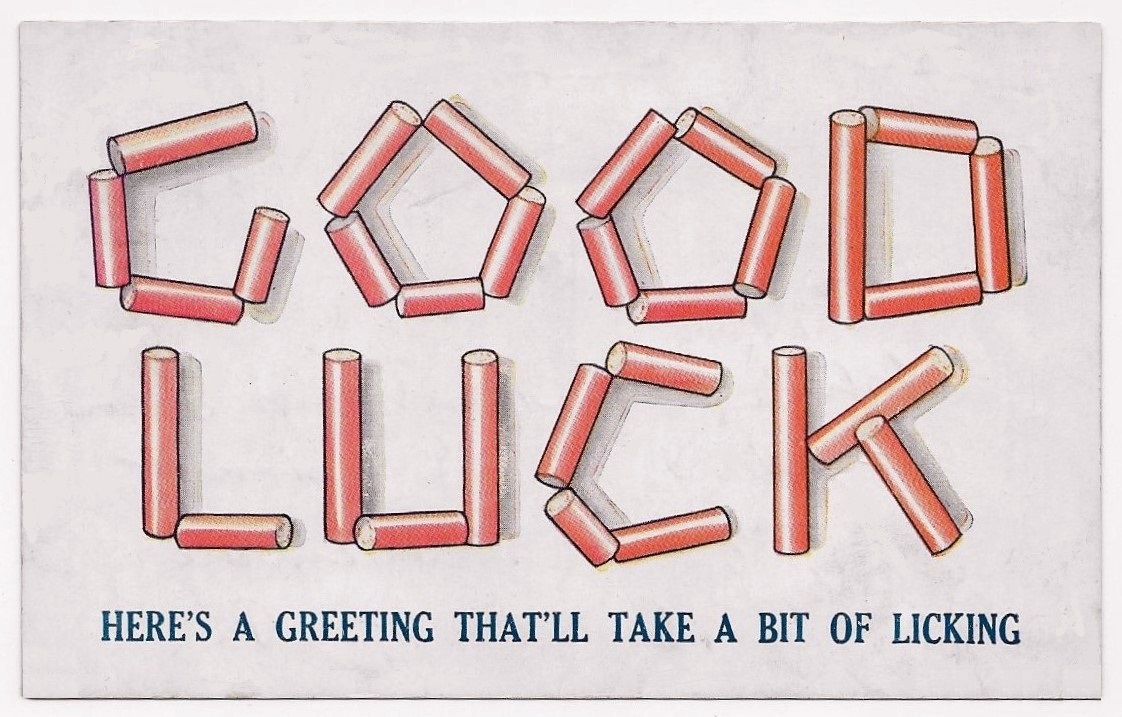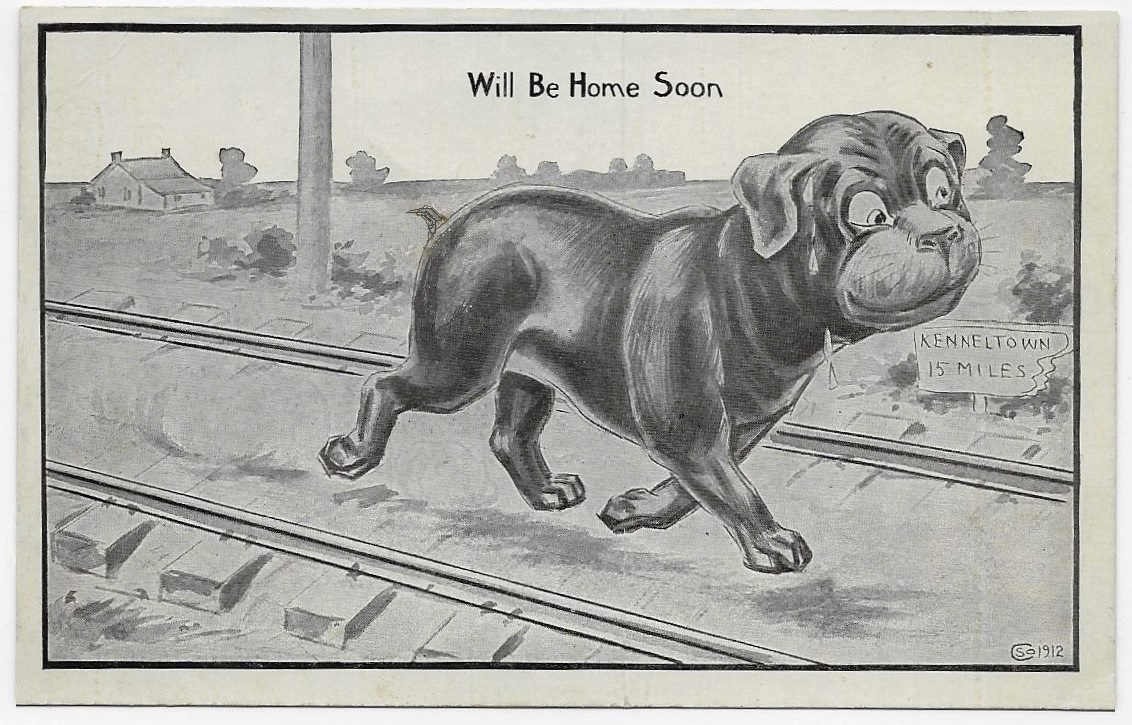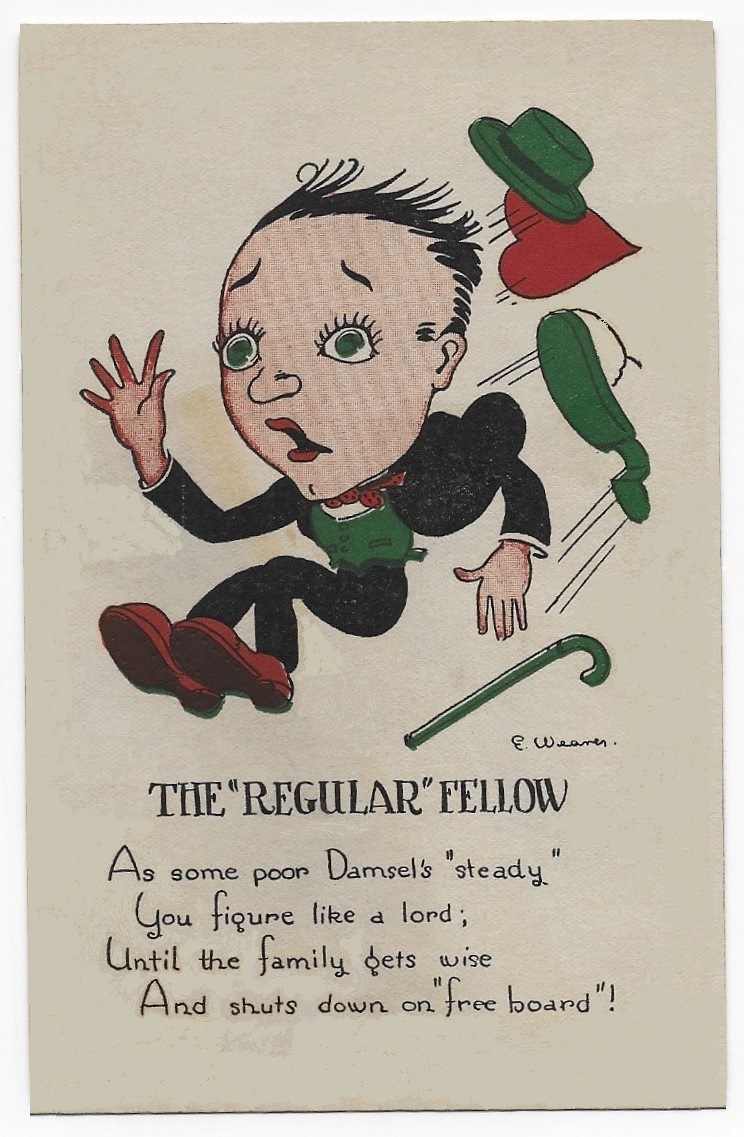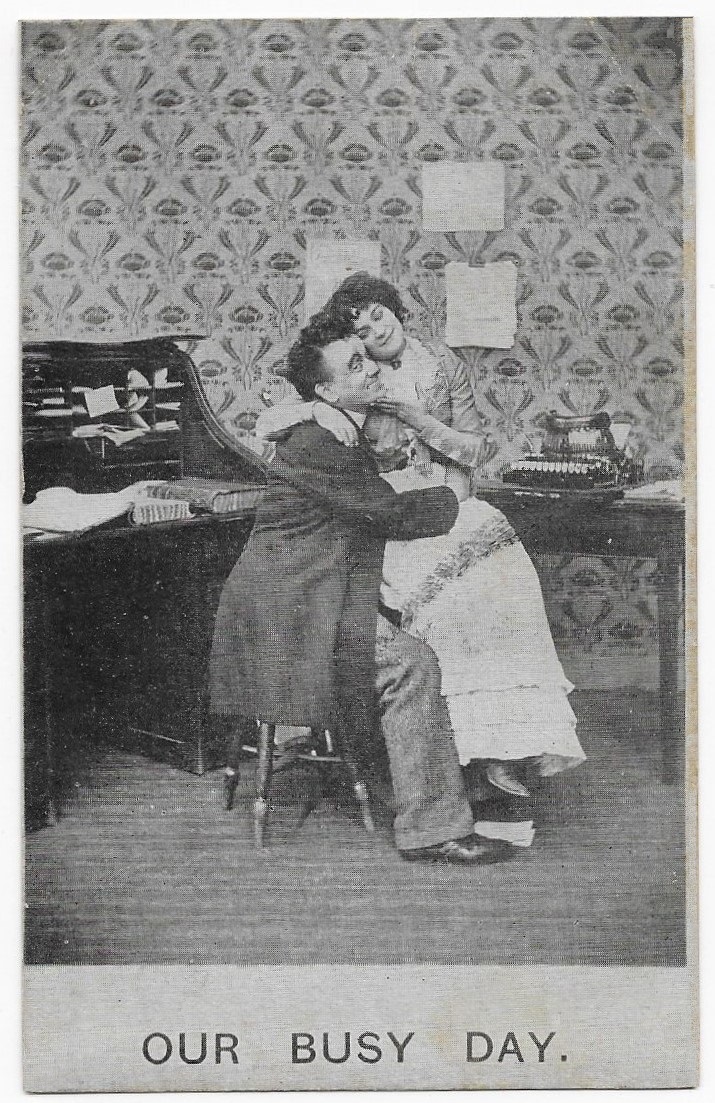
Humor & Comedy
The Joke Is On You.
Of the millions of postcards mailed each year in the early 20th century, a significant proportion were “comic cards” intended to provoke a chuckle, a knowing smile, or laughter.
In the same way that people today exchange humorous memes electronically, friends and family members of the 1900’s shared postcard drawings, illustrations, and photographs that were intended to amuse.
Many of the comic subjects were the same as those in contemporary life – the foolishness of lovers, the failings of the proud, the pitfalls of vanity, lechery, and naivety.
While the broad themes of comedy may be similar to those of our age, there are differences that become readily apparent. The boundaries of comedy do change through time.
The humor of the hard-working wife and the shiftless husband, the desperation of the voyeur, the persistent teasing of the lecher, the projection of stereotypes about racial and ethnic minorities – these are not comic to us.
In this collection, I have not included the most inflammatory examples of racial stereotyping or of sexual pursuit.
Some postcards, sent through the mail in the years around World War I, are risqué even by contemporary standards.
Nevertheless, one sees in vintage postcards how the impulse to share laughter and delight seems to meet a timeless and universal need.
In 1900, 90 per cent households did not have telephones. More than 40 percent of Americans lived on farms.
Young people assumed adult roles at very young ages; many worked as hired hands or maids to support themselves.
For the bare majority of youth who completed High School; graduation often meant separation from youthful friends and companions.
Postcards, including the ones with jokes, comic drawings, and sarcastic quotes, were an important continuation of the casual conversation that is a benefit of friendship.




“Going Home to Kenneltown” – Apple Creek, Ohio (circa 1911)

“The Damsel’s Steady Boyfriend” – Comic Postcard (circa 1914)
